Limited Time Offer!
For Less Than the Cost of a Starbucks Coffee, Access All DevOpsSchool Videos on YouTube Unlimitedly.
Master DevOps, SRE, DevSecOps Skills!
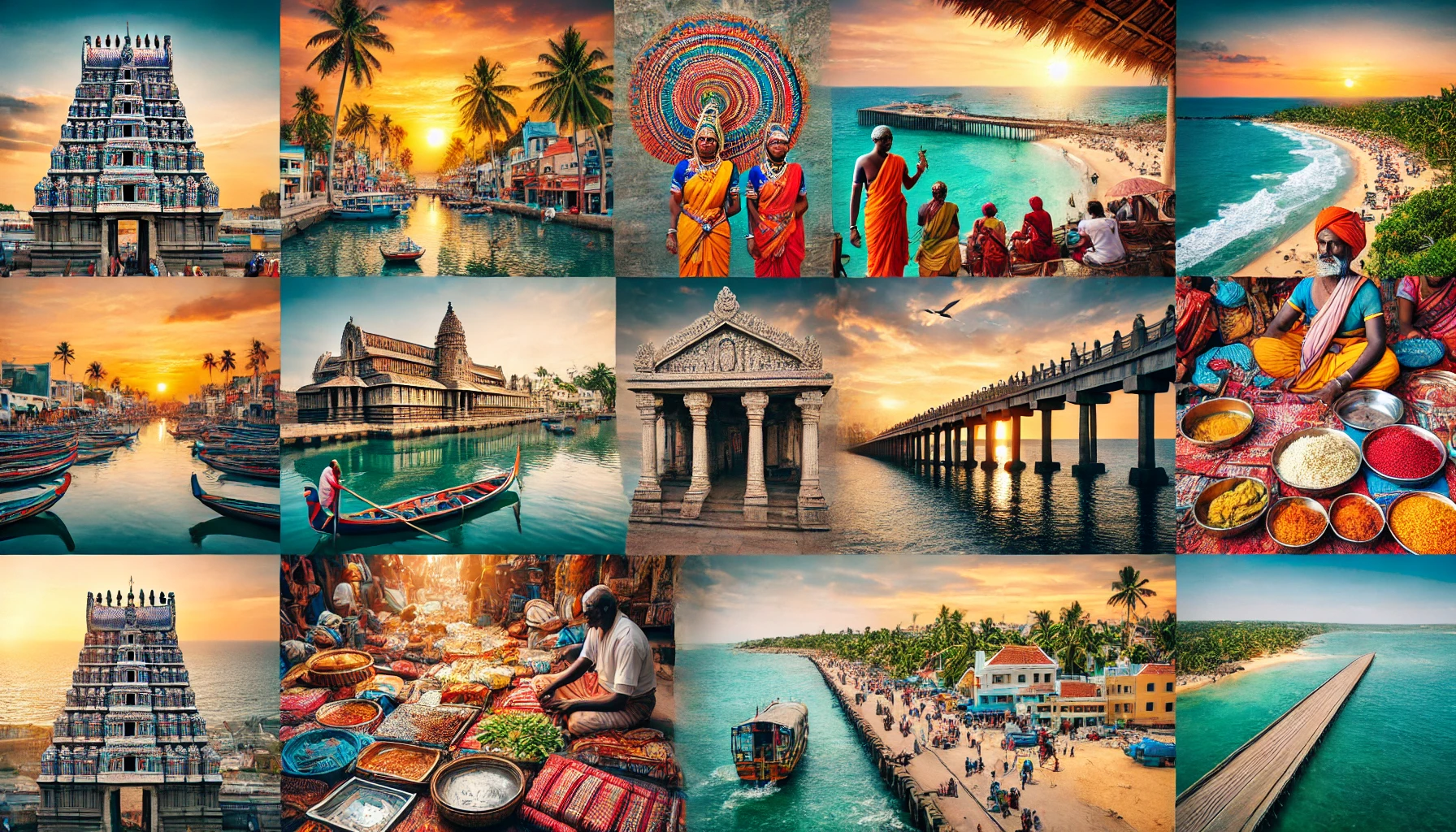
Introduction to Rameswaram
Brief History and Significance
Rameswaram, located on Pamban Island in the state of Tamil Nadu, is steeped in mythological and historical significance. According to Hindu mythology, it is here that Lord Rama built a bridge across the sea to Lanka to rescue his wife Sita from the demon king Ravana, as narrated in the epic Ramayana. This makes Rameswaram a crucial pilgrimage site for Hindus. Historically, Rameswaram has seen centuries of change, with influences from various South Indian dynasties. The town is famed for its magnificent Ramanathaswamy Temple, which houses one of the 12 Jyotirlingas and is a fine example of Dravidian architecture.
Geographical Overview
Rameswaram is situated on Pamban Island, at the very tip of the Indian peninsula, connected to the mainland by the Pamban Bridge. The island lies in the Gulf of Mannar, at the confluence of the Bay of Bengal and the Indian Ocean. The geography of Rameswaram is characterized by sandy shores, shallow waters, and rich marine biodiversity, which includes coral reefs and a variety of marine life. Its unique position also makes it a point from where one can view both sunrise and sunset over the ocean.
Cultural and Religious Importance
Rameswaram’s cultural fabric is woven tightly with its religious heritage. As one of the four Char Dham pilgrimages in Hinduism, it holds immense spiritual significance. Devotees believe that visiting Rameswaram and bathing in its sacred waters absolves them of their sins and helps in achieving Moksha (salvation). The town celebrates numerous festivals with great fervor, most notably Maha Shivaratri, when thousands of pilgrims flock to the Ramanathaswamy Temple to offer prayers. The practice of rituals and the chanting of hymns enrich the cultural atmosphere, making it a vivid and deeply spiritual experience for visitors.
Getting to Rameswaram
Here’s a comprehensive guide on how to reach Rameswaram by air, train, and road, including details on the nearest airports and railway stations, along with tips for traveling locally within Rameswaram, presented in tabular format:
| Transport Mode | Details | Tips | Booking Site |
|---|---|---|---|
| By Air | The nearest airport to Rameswaram is Madurai Airport, which is approximately 175 kilometers away. It offers good connectivity with major cities in India like Chennai, Bangalore, and Mumbai. | After arriving at Madurai Airport, one can hire a taxi or take a bus to Rameswaram. The journey by road from the airport takes around 3 to 4 hours. | Flights can be booked via official airline websites or through portals like Air India. |
| By Train | Rameswaram has its own railway station, Rameswaram Railway Station, which is well-connected to major cities across India, including direct trains from Chennai, Coimbatore, and Madurai. | Train travel is a scenic and economical option. The bridge connecting the mainland to the island offers spectacular views of the sea and is a must-experience during the train journey. | Tickets can be booked through the official Indian Railways booking site, IRCTC. |
| By Road | Rameswaram is connected by a well-maintained network of roads to all major cities in Tamil Nadu. The town can be accessed directly by bus from cities like Madurai, Chennai, and Coimbatore. | Driving to Rameswaram offers the flexibility to stop and enjoy the coastal scenery. Buses are a budget-friendly option, though less comfortable than trains or private vehicles. | Government buses can be booked via TNSTC. |
| Local Travel | Auto-rickshaws and taxis are readily available for local travel within Rameswaram. Many tourists also prefer to rent bicycles or two-wheelers for easy navigation through the town. | Negotiate the fare in advance when hiring auto-rickshaws. For exploring remote areas and temples, consider hiring a taxi for the day. | For taxis, apps like motoshare is available in nearby cities and can sometimes be used to book longer trips into Rameswaram. |
Best Time to Visit
Here’s a detailed guide on the best time to visit Rameswaram based on the weather conditions and local festivals, presented in tabular format:
| Time of Year | Weather Conditions | Recommendations | Notable Festivals |
|---|---|---|---|
| January – March | Cooler and pleasant with temperatures ranging from 20°C to 30°C. Minimal rainfall. | Ideal for visiting temples and beaches due to the comfortable weather. | Maha Shivaratri (February/March) – Major festival celebrated at the Ramanathaswamy Temple with great fervor. |
| April – June | Hot and humid, with temperatures climbing to 35°C or higher. | Less recommended for outdoor activities during midday. Early mornings and late evenings are more comfortable for visits. | Tamil New Year (April) – Celebrations include special rituals in temples and cultural festivities. |
| July – September | Monsoon season with intermittent to heavy rains. Humidity is high. | Suitable for those who enjoy rainy landscapes. Good for indoor activities and temple visits, as the rain brings relief from the heat. | Aadi Amavasai (July/August) – A significant day for performing rituals for ancestors at the seashores and temples. |
| October – December | Post-monsoon relief leads to cooler and more pleasant weather, with temperatures around 25°C to 30°C. | Highly recommended as the best time to explore Rameswaram, owing to the pleasant weather and clear skies. | Deepavali (October/November) – Witness the festival of lights celebrated across the town. |
Local Transportation
Here’s a detailed guide on local transportation options in Rameswaram, including the available types of transport, along with tips for effectively navigating the area:
| Transport Mode | Details | Tips for Navigating | Rental Options |
|---|---|---|---|
| Buses | Local buses are available for intra-city travel. They connect major points within Rameswaram, including tourist attractions. | Buses are a cost-effective way to travel. Be prepared for potential delays during peak tourist seasons. | Not applicable for rentals. |
| Taxis | Taxis are readily available and can be hired for half-day or full-day tours. They offer a comfortable way to explore distant attractions. | Pre-book taxis through your hotel or use reputable local taxi services to ensure safety and avoid haggling over fares. | Car rental services are available for self-driving, but it’s less common. |
| Auto-Rickshaws | Auto-rickshaws are ideal for short distances and can navigate narrow roads that are typical in Rameswaram. | Agree on a fare before starting your journey to avoid confusion later. It’s often possible to negotiate the price. | Auto-rickshaws cannot be rented for self-drive, but you can hire them with a driver for several hours. |
| Bicycles and Two-wheelers | Many visitors choose to rent bicycles or scooters to explore Rameswaram at their own pace. This is especially popular for visiting the beaches and nearby areas. | Renting a bicycle or scooter allows for flexible schedules and is environmentally friendly. Check the condition of the vehicle before renting. | Rental shops are available near major hotels and tourist spots; valid identification and a deposit may be required. |
Accommodations
Here’s a detailed guide on accommodation options in Rameswaram, categorized by budget, along with tips for choosing the best area based on tourist interests, presented in tabular format:
| Budget Level | Accommodation Options | Area and Tips for Choosing |
|---|---|---|
| Luxury Hotels | These hotels offer premium services such as spa facilities, fine dining restaurants, and private beaches. Examples include Hyatt Place Rameswaram and Daiwik Hotels Rameswaram. | Near Ramanathaswamy Temple or along the beaches: Choose locations that offer tranquility and easy access to main attractions. Ideal for those seeking a relaxing and pampered stay. |
| Mid-Range Hotels | Comfortable accommodations with good services like air-conditioned rooms, restaurants, and travel desks. Examples include Hotel Vinayaga and Hotel Royal Park. | Central Rameswaram: Staying central provides convenient access to both temples and beaches, suitable for families and travelers interested in a balanced mix of sightseeing and relaxation. |
| Budget Stays | Budget hotels, guesthouses, and lodges often offer basic amenities. Examples include Hotel Hare Rama Hare Krishna and Gupta’s Annexe. | Near the main temple area or closer to the bus station: Ideal for pilgrims and solo travelers. These areas offer affordable options and are close to public transport facilities, making it easy to navigate the town. |
| Homestays and Ashrams | For an authentic experience, consider homestays or ashrams which provide a more personal touch and often include meals. Examples are local homestays available through various online platforms. | Residential areas around the temple: These provide a deeper cultural immersion and are perfect for longer stays. Recommended for culture enthusiasts and spiritual seekers. |
Must-Visit Attractions
Rameswaram is rich in cultural and natural attractions that appeal to a wide range of tourists. Here are some of the must-visit attractions in Rameswaram, complete with detailed descriptions, opening hours, ticket prices, and helpful tips for visiting:
Ramanathaswamy Temple

Description: This magnificent temple is renowned for its stunning architecture and corridors lined with intricately carved pillars. It is one of the twelve Jyotirlinga temples and holds immense significance for Hindu devotees.
Opening Hours: 5:00 AM to 1:00 PM and 3:00 PM to 9:00 PM daily.
Ticket Prices: Entry is free, but special poojas and offerings may have associated fees.
Tips: Dress conservatively as a sign of respect in this sacred space. Non-Hindus may not be allowed in certain inner sanctuaries, so check access rules on arrival.
Agni Theertham
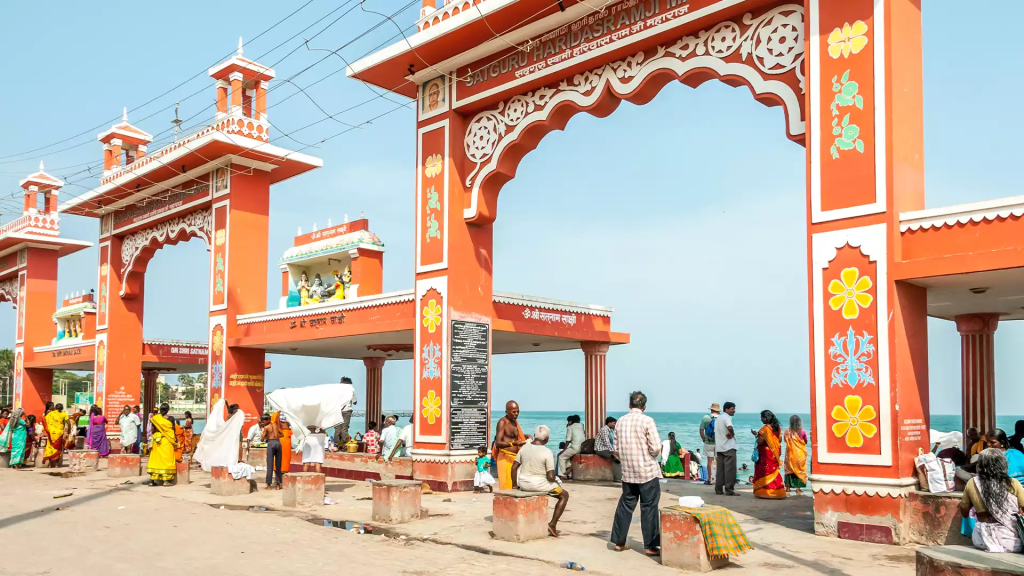
Description: Agni Theertham is one of the 64 sacred baths in India, located along the sea directly adjacent to the Ramanathaswamy Temple. Pilgrims perform rituals here to absolve their sins.
Opening Hours: Accessible at all times, but sunrise is particularly popular and considered auspicious.
Ticket Prices: No entry fee.
Tips: Be prepared for crowded conditions during religious festivals. It’s advisable to safeguard your belongings due to the heavy footfall.
Dhanushkodi

Description: Situated at the southeastern tip of Pamban Island, Dhanushkodi is a ghost town that was destroyed in the 1964 cyclone. The site offers serene beaches and the remnants of a once-thriving town, providing a hauntingly beautiful experience.
Opening Hours: Best visited during daylight hours, generally from 6:00 AM to 6:00 PM.
Ticket Prices: No entry fee, but travel costs if hiring a jeep or vehicle to reach the more remote parts.
Tips: The road to Dhanushkodi can be rough; hiring a local driver who knows the area well is recommended. Don’t forget to visit the iconic ‘floating stone’ temple on the way.
Pamban Bridge
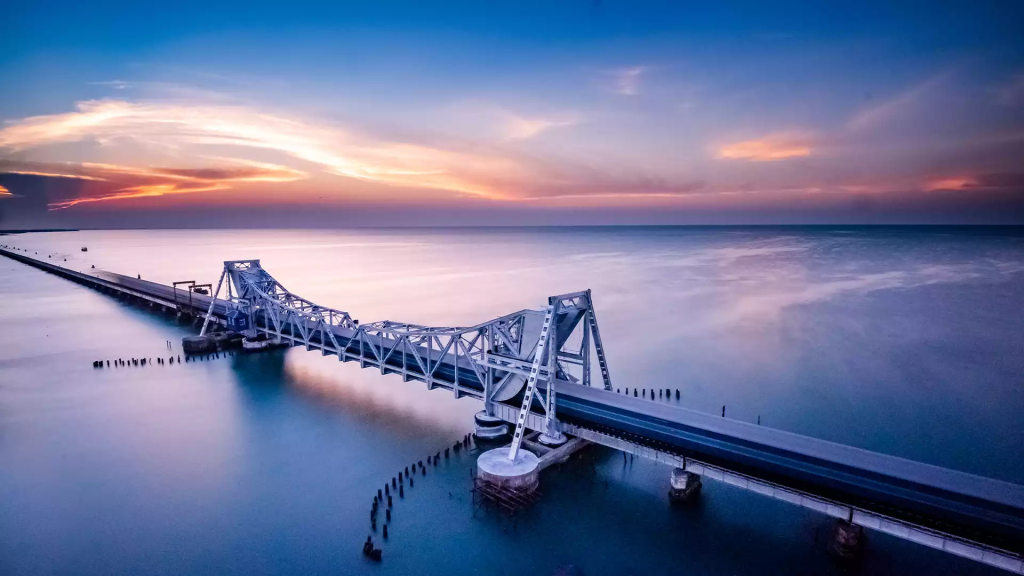
Description: This engineering marvel connects Rameswaram Island to the mainland. The bridge opens up to allow ferry movement below and offers breathtaking views of the surrounding blue waters.
Opening Hours: Always open.
Ticket Prices: Free to view from the roadside or while crossing in a vehicle or train.
Tips: For the best experience, try crossing the bridge by train to enjoy panoramic views of the sea and adjacent coastlines.
Gandhamadhana Parvatham
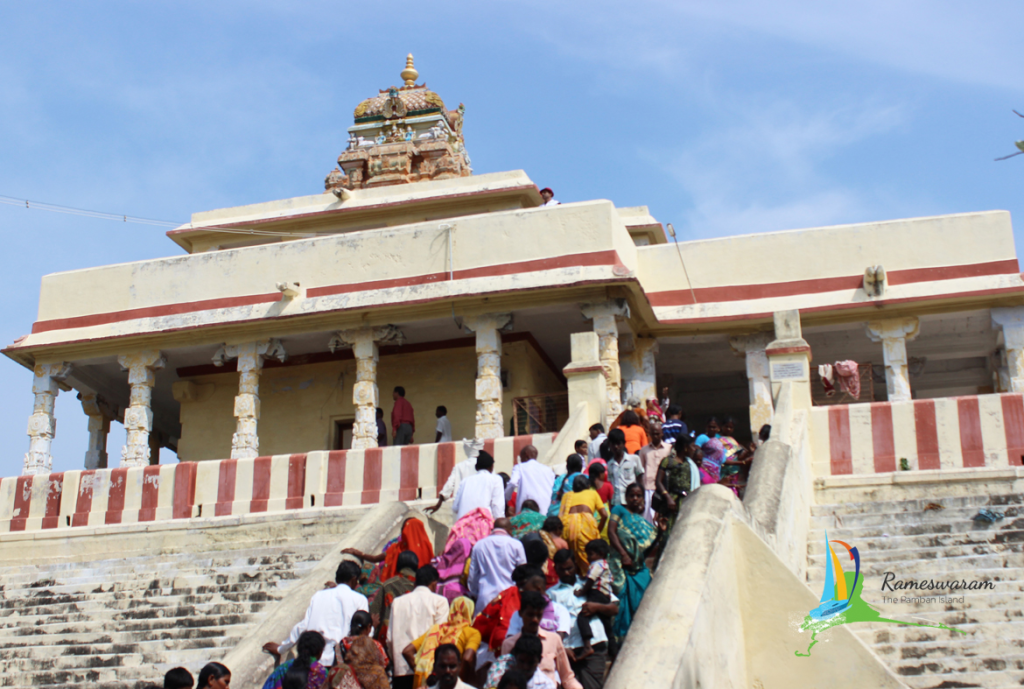
Description: A hillock situated to the northwest of Ramanathaswamy Temple, it offers a panoramic view of the entire island of Rameswaram. The site is believed to carry the imprints of Lord Rama’s feet.
Opening Hours: 7:00 AM to 5:00 PM daily.
Ticket Prices: Free entry.
Tips: Climbing the hillock can be strenuous; carry water and wear comfortable shoes. The view from the top is worth the effort, especially during sunrise or sunset.
Activities and Experiences in Rameswaram
Rameswaram offers a blend of cultural, religious, and adventure experiences that cater to a wide range of interests. Here’s a detailed guide to help visitors make the most of their stay:
Cultural Experiences, Religious Ceremonies, and Special Events
- Temple Rituals at Ramanathaswamy Temple: Participate in or observe the various rituals and poojas. The temple conducts several ceremonies throughout the day, allowing visitors to immerse themselves in spiritual practices.
- Festival Celebrations: Join in the festivities during major Hindu festivals like Maha Shivaratri and Rama Navami, where the town comes alive with processions, special rituals, and cultural performances.
- Village Tours: Take guided tours to nearby villages to see traditional Tamil lifestyles and crafts. These tours often include demonstrations of local handicrafts and interaction with the local communities.
- Cultural Shows: Look for cultural shows that happen periodically in or near Rameswaram, where you can witness traditional dance and music performances, often held in open-air settings near major attractions.
Adventure and Outdoor Activities
- Kayaking and Stand-up Paddleboarding: Enjoy water sports in the calm sea waters. Equipment rental and guided tours are available from several providers along the main beaches.
- Snorkeling and Scuba Diving: Explore the underwater life around Rameswaram, known for its rich marine biodiversity. There are a few dive shops in Rameswaram offering equipment rental, guided dives, and even certification courses.
- Beach Sports: Participate in or organize beach volleyball and football games on the expansive beaches of Rameswaram. These are great for groups looking to blend relaxation with some physical activity.
- Nature Walks and Bird Watching: Visit the nearby sanctuaries such as the Gulf of Mannar Marine National Park, where guided nature walks and bird watching tours are available. This park is home to various species of marine and bird life, making it a haven for nature enthusiasts.
- Kite Surfing: For the more adventurous, kite surfing is becoming increasingly popular in Rameswaram due to its ideal wind conditions. There are facilities along the coast where beginners can learn and equipment can be rented.
- Cycling Tours: Rent a bike and explore the coastline and the quieter parts of the island at your own pace. This is an eco-friendly way to see the sights and enjoy the natural beauty of the area.
Shopping and Souvenirs
Here’s a guide to the best places for shopping and the unique local specialties of Rameswaram that make perfect souvenirs, presented in tabular format:
| Shopping Location | Description | Specialties and Souvenirs |
|---|---|---|
| Temple Streets Market | Located around the Ramanathaswamy Temple, this market is bustling with shops and stalls. | Sea Shell Items: Ranging from decorative pieces to jewelry, made from the variety of shells found on the local beaches. Handicrafts: Traditional items crafted by local artisans. |
| Agni Theertham Market | Situated near Agni Theertham, this market caters primarily to pilgrims and tourists. | Palm Leaf Manuscripts: These are traditional and culturally rich items, often inscribed with religious texts or local folklore. Silk Saris: Buy traditional Tamil silk saris, known for their quality and beauty. |
| Dhanushkodi Market Stalls | These makeshift stalls are set up by local vendors near the ghost town of Dhanushkodi. | Miniature Models of Pamban Bridge and Rameswaram Temple: These are popular among tourists as mementos of their visit to Rameswaram. |
| Local Artisan Shops | Scattered throughout the town, these shops sell products made by local craftsmen. | Spices and Herbal Products: Rameswaram is known for its variety of spices and herbal products that are native to the region. Wooden Carvings: Intricate carvings often depicting scenes from the Ramayana or other Hindu legends. |
Local Cuisine
Rameswaram offers a variety of local dishes that highlight the flavors of Tamil Nadu, especially its coastal and South Indian cuisine. Here’s a guide to some must-try dishes and recommended places to eat:
Must-Try Dishes
- Fish Curry: Prepared with local spices and coconut, this flavorful dish reflects the town’s proximity to the sea.
- Prawn Masala: A spicy dish made with fresh prawns, tomatoes, and a blend of local spices.
- Kothu Parotta: A popular South Indian street food made by mincing parotta (a flaky flatbread) with egg, meat, and spices.
- Rasam: A spicy-sour soup traditionally prepared with tamarind juice, tomatoes, and a variety of spices.
- Idli and Dosa: Staple South Indian dishes served with sambar and a range of chutneys.
- Halwa: A sweet dessert made in many varieties including wheat, rice, and nuts mixed with ghee.
Recommended Restaurants and Eateries
- Ambika Hotel: Renowned for its authentic South Indian dishes, especially its breakfast menu of idlis, dosas, and vadas.
- Gujarat Bhavan: Ideal for those looking for vegetarian options, offering a homely Gujarati thali that’s both nutritious and filling.
- Hotel Sri Saravana: Famous for its seafood varieties, particularly the fish curry and prawn masala.
- Sea Star Restaurant: A great spot for tasting local cuisine with a view of the sea. They serve excellent Kothu Parotta and fresh seafood dishes.
- Ram Nivas Hotel: Offers a mix of North and South Indian dishes, known for its hygiene and tasty food at reasonable prices.
Cultural Etiquette and Tips
Here is a guide to cultural etiquette and tips for Rameswaram, organized in tabular format to clearly outline the dos and don’ts, especially when visiting religious sites:
| Aspect | Do’s | Don’ts |
|---|---|---|
| Dress Code | Wear modest clothing covering shoulders and knees, regardless of gender. | Avoid shorts, sleeveless tops, and tight clothing, especially at religious sites. |
| Footwear | Remove shoes before entering temples or sacred areas. | Wear shoes inside religious buildings or sacred grounds. |
| Leather Items | Use non-leather items like cloth or synthetic bags when visiting temples. | Bring leather items like belts, bags, or jackets into temples as they are often prohibited. |
| Photography | Ask for permission before taking photos, especially of people and inside temples. | Take photos where signs explicitly prohibit it or in sensitive areas during rituals. |
| Participation | Follow local customs or priest instructions during rituals if participating. | Intrude or disrupt ongoing religious ceremonies if you are not familiar with the practices. |
| Public Decorum | Display general respect and politeness in public spaces. | Engage in public displays of affection, which can be considered disrespectful in conservative areas. |
| Handling Items | Use your right hand for giving, receiving, or eating, in line with local customs. | Use your left hand for these activities, as it is traditionally considered unclean. |
Day Trips from Rameswaram
Day trips from Rameswaram offer a wonderful opportunity to explore the rich cultural landscape and natural beauty of Tamil Nadu. Here are some recommended destinations for day trips, along with what to expect and tips on how to plan these excursions:
Madurai
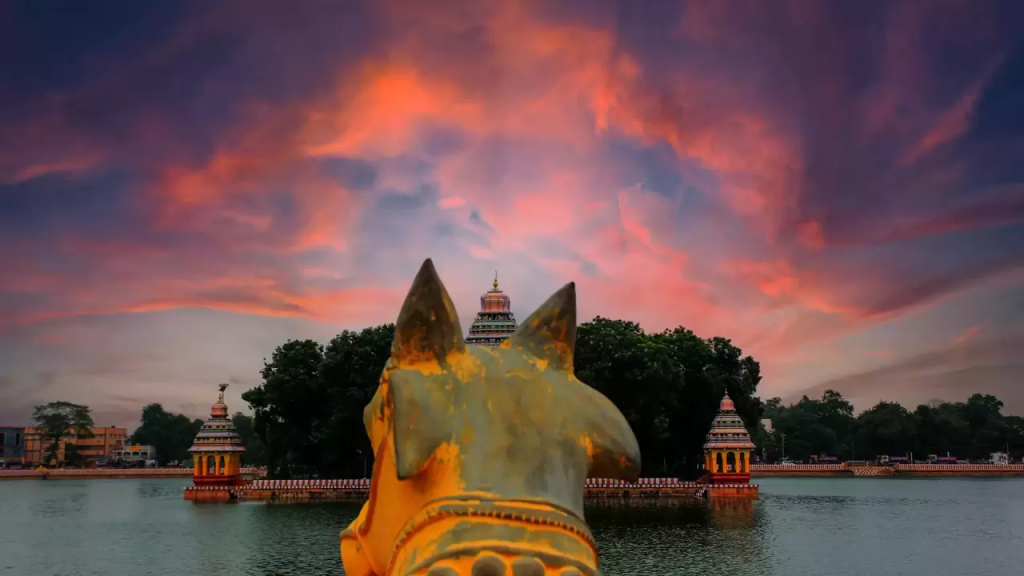
What to Expect:
Madurai is one of the oldest continuously inhabited cities in India and is famous for its rich cultural heritage and historic temples. The highlight is the Meenakshi Amman Temple, an architectural marvel that attracts visitors from around the world. Additionally, explore the bustling street markets and try local snacks like the famous Madurai jigarthanda.
Planning Tips:
- Travel: Madurai is about 3.5 hours by road from Rameswaram. Frequent bus services and private taxis are available.
- Timing: Leave early in the morning to maximize your time exploring Madurai. Consider staying late to experience the temple rituals and ceremonies at night.
- Visit: Prioritize visiting the Meenakshi Temple, Thirumalai Nayakkar Palace, and Gandhi Museum. If time permits, explore local markets.
Kanyakumari
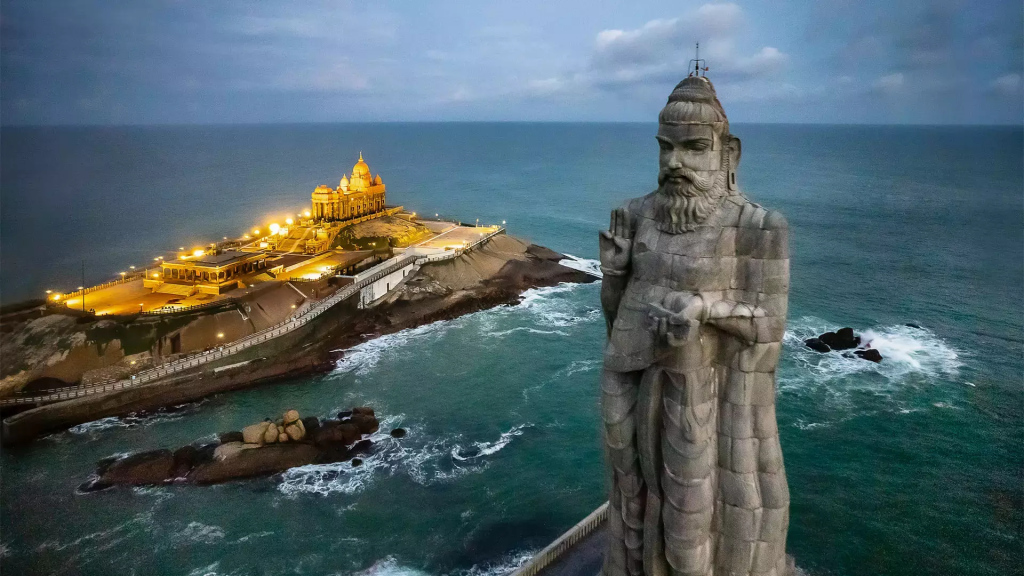
What to Expect:
Kanyakumari, located at the southernmost tip of the Indian Peninsula, is where the Arabian Sea, the Bay of Bengal, and the Indian Ocean meet. Famous for its beautiful sunrises and sunsets, especially at the Vivekananda Rock Memorial, Kanyakumari is also rich in history and culture.
Planning Tips:
- Travel: The journey to Kanyakumari takes about 5 hours by road, so an early start is essential.
- Timing: Plan your trip so that you can view either sunrise or sunset, which are particularly spectacular here.
- Visit: Don’t miss the Vivekananda Rock Memorial, Thiruvalluvar Statue, and the Kanyakumari Temple.
Gulf of Mannar Marine National Park

What to Expect:
This marine biosphere reserve lies between the Tamil Nadu coast and Sri Lanka. It is known for its diverse marine ecosystems with mangroves, coral reefs, and a variety of marine fauna. It’s an excellent spot for eco-tourists and those interested in snorkeling and exploring marine life.
Planning Tips:
- Travel: The park is accessible via Mandapam, which is about a 20-minute drive from Rameswaram.
- Timing: Check the availability of boat rides and guided tours before you go, as they depend on the weather and tides.
- Visit: Organize a guided tour to maximize your experience in the park, focusing on snorkeling and exploring the coral reefs.
Thanjavur

What to Expect:
Thanjavur is known for its grand Brihadeeswarar Temple, a UNESCO World Heritage site, showcasing the height of Tamil architecture under the Cholas. It is also famous for its unique art style, the Thanjavur paintings, and the classical South Indian music and dance.
Planning Tips:
- Travel: Thanjavur is about a 4-hour drive from Rameswaram.
- Timing: Spend the day exploring the architectural and cultural sights.
- Visit: Visit the Brihadeeswarar Temple and the Royal Palace complex, which houses several museums.
Safety and Travel Tips
Here are the safety and travel tips for Rameswaram organized into a tabular format, covering general safety protocols and health-related advice:
| Category | Safety Tips | Health Tips |
|---|---|---|
| General Safety | – Stay informed about local news and travel advisories. – Secure your belongings with locks and avoid displaying valuables. – Consider travel insurance for theft, loss, and medical emergencies. – Respect local laws and customs, especially at religious sites. – Keep a list of emergency contacts, including local police and your embassy. | – Carry a basic first aid kit. – Know the locations of nearest healthcare facilities and pharmacies. |
| Health Precautions | – Drink plenty of water to stay hydrated. – Use sunscreen and wear protective clothing to guard against the sun. – Ensure food safety by choosing clean and busy eating spots. – Carry mosquito repellent and wear protective clothing during the monsoon to prevent mosquito-borne diseases. | – Government Hospital Rameswaram for basic health services and emergency care. – Local pharmacies for over-the-counter medications. |
Photography Tips for Rameswaram
Rameswaram offers stunning landscapes, vibrant cultural scenes, and architectural marvels, making it a fantastic destination for photography enthusiasts. Here are some tips on the best spots for photography and the important restrictions you should be aware of:
Best Spots for Photography
- Pamban Bridge: This architectural wonder provides dramatic views of the ocean and the railway. It’s particularly striking during sunrise or sunset.
- Ramanathaswamy Temple: The long, ornately carved corridors are perfect for capturing the essence of Dravidian architecture. The temple’s towering gopurams (gateway towers) are also iconic subjects.
- Dhanushkodi: The abandoned town and its serene beaches offer a unique landscape of ruins and sea, ideal for dramatic compositions.
- Agni Theertham: The bustling activity of pilgrims performing rituals at sunrise provides a culturally rich scene.
- Gandhamadhana Parvatham: Offers panoramic views of the island and is great for landscape shots.
- Kunthu kal Beach and Ariyaman Beach: These beaches are known for their clear blue waters and pristine sands, perfect for serene beach landscapes.
Restrictions on Photography
- Ramanathaswamy Temple: Photography is strictly prohibited inside the temple premises. You can take pictures of the exterior and the surrounding areas.
- Dhanushkodi Temple Area: While the area is generally open for photography, respect any signage or local norms that might restrict taking pictures of specific religious activities or inside small shrines.
- Cultural Sensitivity: When photographing people, especially during religious activities or rituals, always ask for permission. Avoid using flash photography that can disrupt the ambiance or the ongoing activities.
Additional Tips:
- Timing: Early mornings or late afternoons are the best times for photography in Rameswaram, offering soft light and vibrant sky colors.
- Equipment: A good range of lenses can help capture the diverse landscapes and architectural details. A wide-angle lens is perfect for architectural and landscape shots, while a telephoto lens can be useful for capturing details from a distance.
- Composition: Look for unique angles and compositions. Reflections in water, silhouettes, and the interplay of light and shadows can add a dramatic effect to your photographs.
Useful Contacts and Resources for Rameswaram
When planning a trip to Rameswaram, having access to the right contacts and resources can enhance your travel experience and provide essential support in case of emergencies. Here’s a guide to important contacts and helpful resources:
Contact Information
| Service Type | Contact Details |
|---|---|
| Local Tourism Office | Rameswaram Tourism Office: +91 4573 221 371 |
| Emergency Services | Police: 100 Fire: 101 Ambulance: 102 |
| Nearest Hospital | Government Hospital Rameswaram: +91 4573 223 064 |
| Embassies (For International Tourists) | Contact the nearest major city like Chennai where most consulates are located. U.S. Consulate General, Chennai: +91 44 2857 4000 |
Additional Resources
- Travel Apps:
- IRCTC Connect: For booking and managing train travel within India.
- MakeMyTrip: For booking flights, hotels, and buses across India.
- Ola/Uber: For cab bookings within nearby cities or long-distance cabs to Rameswaram.
- Websites:
- Incredible India (incredibleindia.org): The official tourism website of India provides detailed information about Rameswaram and other tourist destinations.
- TripAdvisor: Offers traveler reviews and tips on accommodations, restaurants, and attractions in Rameswaram.
- Guides:
- Lonely Planet and Rough Guides: These travel guidebooks offer comprehensive coverage on Rameswaram, including cultural insights, maps, and itineraries.
- Local Travel Guides: Often available for purchase at hotel receptions or tourist sites, these guides can offer detailed insights and are tailored to the area.
Conclusion: Discover the Enchantment of Rameswaram
Rameswaram, with its unique blend of spiritual sanctity, rich history, and natural beauty, stands as a profoundly special destination. It is not merely a place to visit, but a realm to experience deeply. From the majestic corridors of the Ramanathaswamy Temple, which echo the footsteps of countless pilgrims, to the tranquil ruins of Dhanushkodi, every corner of this island has a story to tell.
The spectacular Pamban Bridge serves as a gateway to this island, symbolizing the transition from the mundane to the divine. The serene beaches and the untouched natural landscapes offer not just relaxation but a chance to reconnect with nature’s untouched beauty. Moreover, the traditional festivities and rituals provide a vivid glimpse into the rich tapestry of local culture and religious devotion.
As you plan your visit to Rameswaram, embrace the opportunity to immerse yourself in its cultural and religious practices. Respect for local customs and traditions enriches the travel experience, fostering a deeper connection with the place and its people. Whether it’s participating in a temple ceremony, enjoying the local cuisine, or simply walking along the sandy shores, every moment spent in Rameswaram adds a layer of profoundness to your journey.
Let Rameswaram captivate your heart with its purity and allure. This is a place where the past and the present merge, where the spirit of tranquility and adventure coexists, inviting travelers to not just see, but feel and live the essence of this sacred island. Enjoy your journey to Rameswaram, and let it transform your perception of travel.

Thanks for sharing complete tourist guide